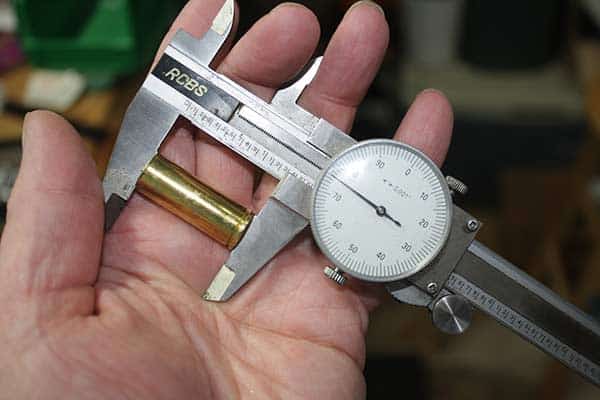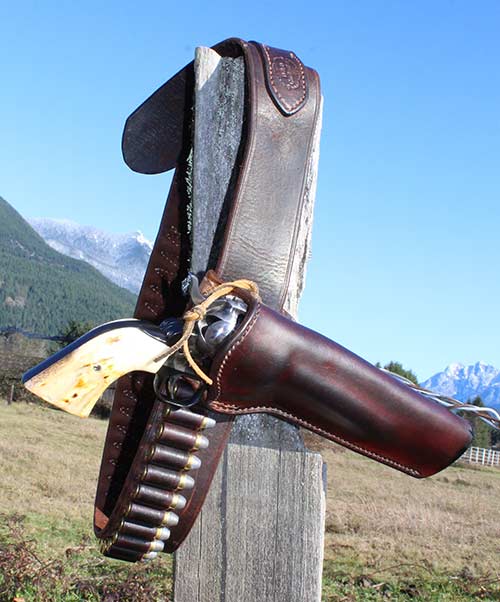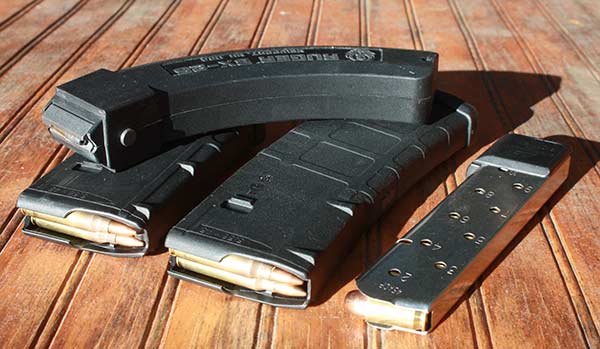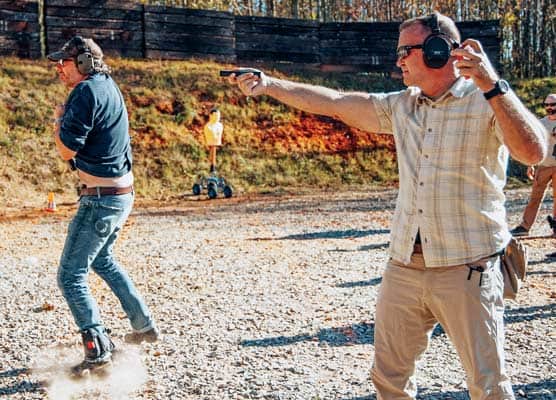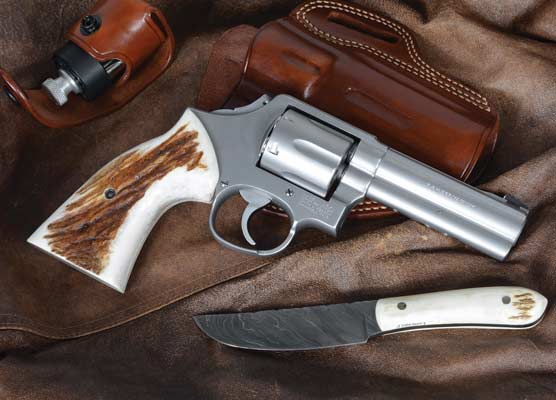Trim Length: Reloaders
Must Pay Attention
Ever have one of those weekends when nothing seemed to go right at the loading bench?
One thing a lot of people overlook is case trimming, not to the maximum length shown on every cartridge diagram in every reloading manual I’ve ever seen — which is a bunch of them — but to the trim length. This is typically 0.010-inch shorter than the maximum case length, which may not seem like much but it makes a world of difference in your loads and how they chamber in your firearm.
To underscore the importance of this very simple procedure, I grabbed the nearest loading manual — in this case my “Hornady Handbook of Cartridge Reloading, 8th Edition” — and turning to Page 48, this is what it says:
“Cases may stretch in time, depending on the action in your firearm and the amount and nature of resizing you subject cases to. Cases that ‘grow’ too long will eventually not chamber in your firearm. If the cases you are reloading come from unnamed sources, or if you are shooting automatic or lever-action rifles, or if you consistently full length resize cases, measuring them before reloading is a great idea — unless you want to pull bullets, dump powder, and trim cases after ‘finishing’ your reloading.”
So it is written, so let it be done!
The Hornady manual also acknowledges not every fired case needs to be trimmed. Happens to me all the time, but over the years I’ve developed a pattern. After reloading once-fired brass and shooting those loads, I put each case through the resizing die and only then do I measure the brass. If the cases need trimming, that’s when you will find out.
Once trimming is finished, I’ll chamfer the case mouth to remove any burrs. Then, even with the case lube still on the brass, I will dump them in my tumbler with hot, soapy water to be polished by thousands of tiny steel pins for 2-3 hours and come out shinier than when they were new in the factory box.
Bad Crimped .45 Colt
Which brings me around to a recent experience with some .45 Colt loads I had put together, probably sometime last year. For whatever reason, the crimps were swelled and the cartridges would not chamber in my sixgun.
That may be okay at the range, but if you’re in a pinch and need to reload, and your rounds won’t chamber, it is a sudden problem.
So, after returning home from a trek into the mountains, I pulled the bullets in each round, ran the cases about halfway up into the carbide resizing die and slipped the empties into my revolver chambers. Then I checked the case length and, for the first time ever with a .45 Colt cartridge, I actually had to trim a couple back to spec. After chamfering, I tossed them into a batch of .45 Colt brass I’ll get to sometime this fall.
Straight wall cases don’t seem to need trimming that often, at least not when using my loads. Doesn’t matter whether we’re talking .357 or 41 Magnum brass, the .45 or .38 Special; but this is something one must pay attention to because eventually, brass is going to stretch, as per the admonition above.
Out in my workshop, at this writing, are about 140 empties from my brother’s .308 Win. bolt-action. I’m going to resize and reload all of them this winter and likely add them to my stores, and no doubt we’ll burn them up in 2023 keeping our .308-caliber rifles zeroed. I prefer 165-grain boattails for the .308 Win., and they work in his gun as well as mine.
Once as a favor, I tuned up his bolt gun, sighting it to hit 2.5 inches high at 100 yards. Out at the 200-yard berm, someone had left one of those orange clay discs, so I leveled the crosshairs on that target and pressed the trigger. The clay erupted in a bunch of chunks and dust. On a hunt two years ago, he used that rifle and the same loads to punch a fat 4-point mule deer at about 125 yards.
Cruz Cracks a Code
U.S. Senator Ted Cruz (R-TX) recently demonstrated his low-tolerance level for stupidity when he appeared at the Texas Tribune Festival long enough to raise the hackles of some apparent gun control proponents.
All he did was explain the facts about gun control and criminals. Some people in the crowd evidently didn’t like it, but that’s their problem, not the senator’s. Well, what did he say?
“If the objective is to stop these crimes, gun control is singularly ineffective,” Cruz said, according to the Tribune account. “When you disarm law-abiding citizens … [they] give up their weapons. The criminals don’t.”
He didn’t stop there, either. The newspaper said some members of the audience applauded Democrat gun control efforts, to which Cruz responded, “You can clap for that, except for the minor problem that it doesn’t work.”
Criticize Cruz all you want, but he speaks the truth. Criminals don’t obey gun control laws, and to believe otherwise suggests a level of self-imposed gullibility only getting mugged seems to cure.
As if to amplify Cruz’ position on gun rights, a 96-year-old Cuban woman identified as Isabel Caballero recently told the Associated Press in Miami why she opposes gun control. Any lady that old deserves to be listened to, if for no other reason than the fact she is that old.
She recalled how after Fidel Castro overthrew the Batista government, “Cubans were encouraged to register weapons and later authorities used a list to go door-to-door encouraging people to turn over the firearms.”
After the people turned in their guns, the only ones left armed were Castro’s bunch. It’s a mistake people only get to make once.
Caballero summed it up: “Lesson? Do not let them go.”
Dragging It Out
Here’s a lesson on why federal court cases involving gun rights drag on for so long. The courts are in no hurry.
The Second Amendment Foundation recently heard via the attorneys representing the group in a federal challenge of a Washington State ban on so-called “high capacity magazines” that the trial date has been set for Dec. 4, 2023. That’s not a misprint. We’re talking a trial date more than one year out.
SAF and its partners, including a private citizen identified as Gabriella Sullivan, sued Washington Attorney General Bob Ferguson earlier this year, right before the ban was to take effect July 1. The Legislature, with Democrat Ferguson in support, passed the magazine ban against massive opposition.
Two other magazine ban challenges — one in California and the other in New Jersey — are already in the works, so it just might be the federal district court in Tacoma, Washington is simply dragging its feet in anticipation of a ruling in that case. The California and New Jersey cases were remanded back to lower appellate courts for reconsideration in harmony with the high court’s June 23 decision in New York State Rifle & Pistol Assn. v. Bruen, which did away with “means-end” scrutiny in Second Amendment cases.
The court order in the SAF case versus Washington’s ban came from U.S. District Judge David G. Estudillo, who had just taken the position as chief judge for the Western District of Washington. He’s a Joe Biden appointment.

